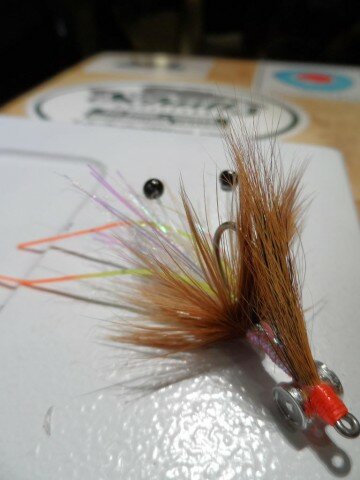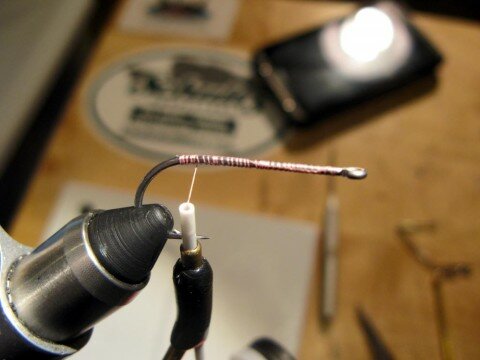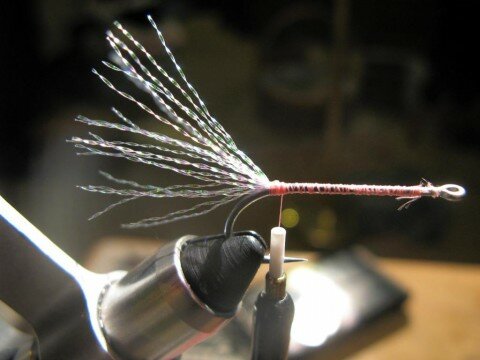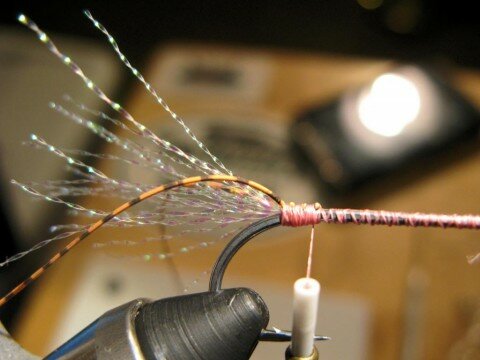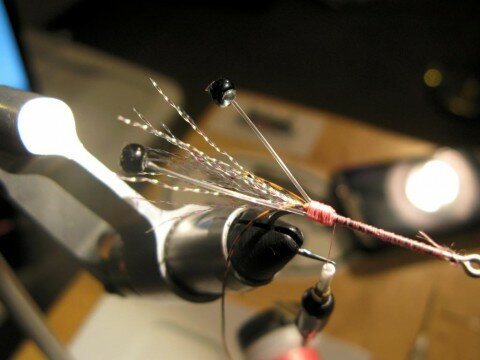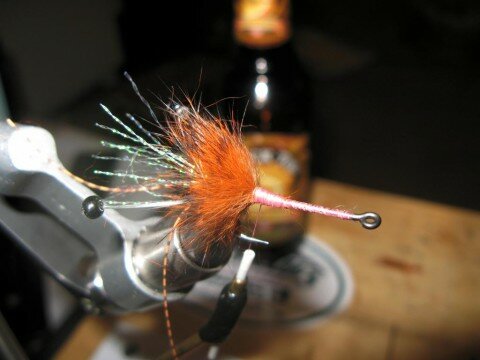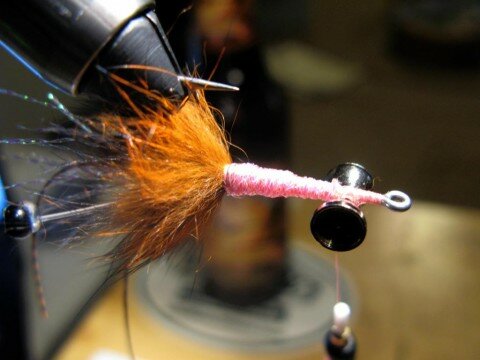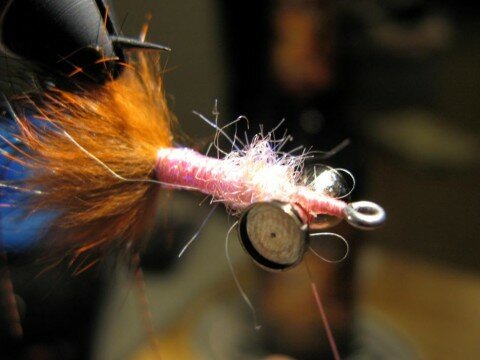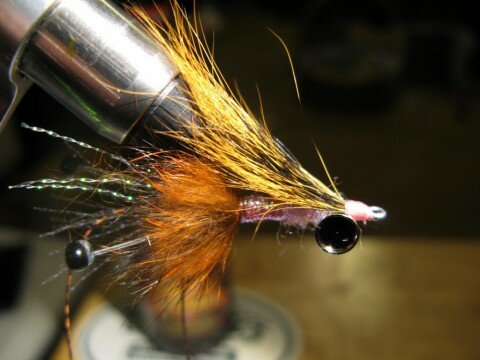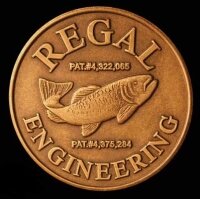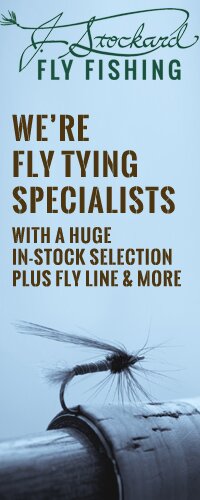What better to follow the Squirrely, than the Squirrelly Shrimp, haha! This one is from the designer of the amazing Franken Shrimp fly, Ben Treppa. Ben shows us how to tie another really cool shrimp pattern step-by-step. Be sure to visit his blog “Waiting on a bite…”
Place hook in vise. Secure thread at eye and wrap back to the hook bend.
Cut several pieces of pearl krystal flash off the hank, fold in half, and half again until its about 1 1/2″ long and attach to the rear of the hook.
Tie two orange barred centipede legs. Length is up to you but I prefer about a 1.5 times the hook length.
Attach mono eyes. I make the eyes using a 6/0 czech glass bead, 20lb hard mono, and Deer Creek Diamond Hard UV resin. The eye length is up to your own personal preference. Because I feel they are an important trigger for fish I make sure they are at least the length of the hook shank.
Wrap a rear collar of Crawfish Orange Barred Magnum rabbit. I prefer to cut it off the hide and put it in a dubbing look to help limit bulk. However, it will work just fine either way!
After tying in rabbit color tie in Pink sparkle flat braid. Work thread to 1/4″ behind hook eye. Wrap flat braid forward and tie off and trim excess. Choose eyes and attach 1/4″ behind hook eye. For this particular fly I chose Aluminum Sea Eyes. They aren’t heavy, especially for their size. Depending on where you are fishing or the style you may want to change to lead or bead chain.
Dub a small amount of shrimp pink ice dub behind the eyes.
Roate hook in the vise if you havent already (you want the hook to ride up so it is weedless). Cut a good sized clump of natural squirrel hair off of a squirrel tail. Try to find an area that has hair a little bit longer then the hook shank. Tie in “clouser” style. If it seems to be laying a little flat after tying it in simply lift up the hair and wrap a thread bump behind it.
Whip finish and coat threads with head cement, epoxy, or UV coating you prefer.

